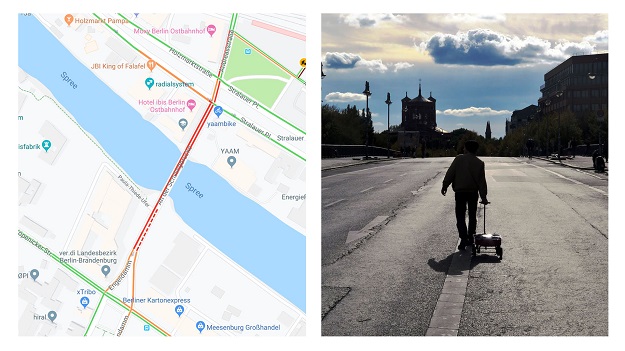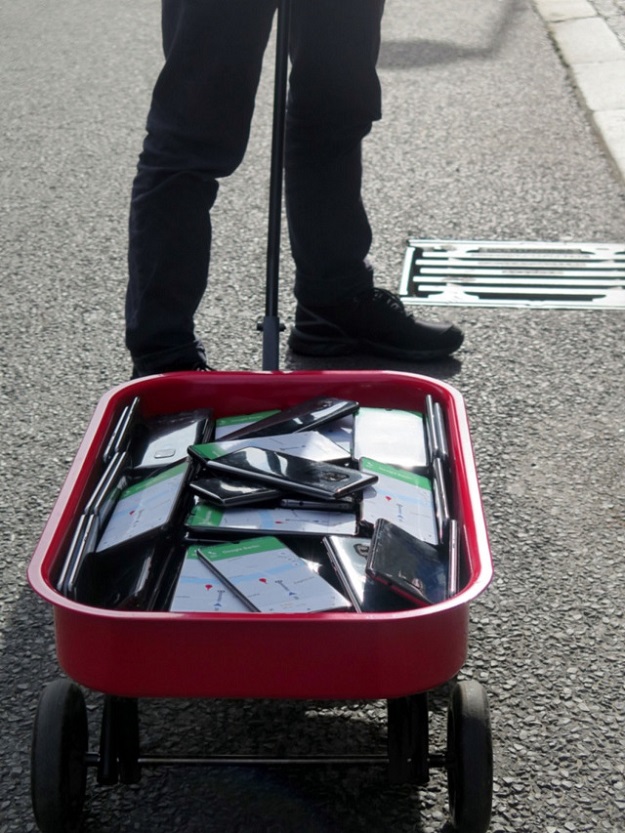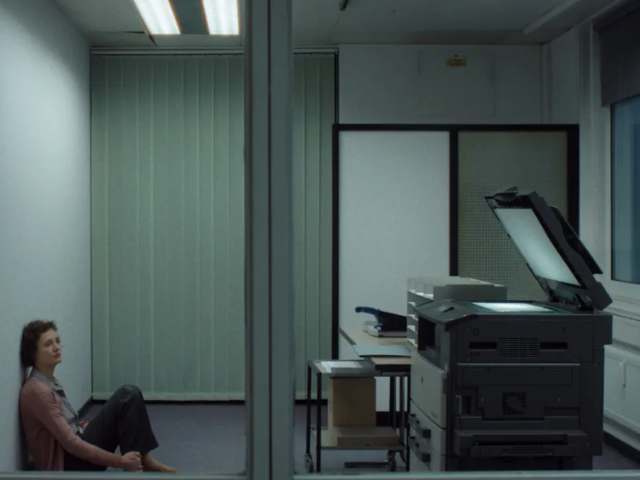
He walked the streets of Berlin pulling around a red wagon behind him filled with 99 smartphones with Google Maps opened.
Wherever he went the application showed traffic congestion. Users people would see a thick red line indicating heavy traffic on the road even when there was none.
 PHOTO: Simon Weckert
PHOTO: Simon Weckert“By transporting the smartphones in the street I’m able to generate virtual traffic which will navigate cars on another route,” Wreckert told Motherboard in a Twitter DM.
“Ironically that can generate a real traffic jam somewhere else in the city.”
The motivation behind doing this hack/art installation is to make people understand the space we give to cars in public life and the data we have been relying on to get from one place another Wreckert told Motherboard.
New Huawei handset to launch without Google apps
“Isn’t it crazy [how] much space is used by a car in a city compared to the usage?” he said.
“The hack shows us what is possible with this technology and who we rely on.”
To pull this off Wreckert rented out 99 Android devices purchased Sims card for all of them online and then walked back and forth on the street to create traffic jams.
 PHOTO: Simon Wreckert
PHOTO: Simon Wreckert“My subjective feeling was that even this short time was already enough to change the traffic in the street,” he said.
“‘The map is not the territory ... but another version of reality,’’ he quoted semanticist Alfred Korzybski, one of William S Burroughs’ biggest influences.
“Data is always translated to what they might be presented. The images, lists, graphs, and maps that represent those data are all interpretations, and there is no such thing as neutral data. Data is always collected for a specific purpose, by a combination of people, technology, money, commerce, and government.”
“Maps have the potential as an instrument of power,” he said. “They substitute political and military power in a way that represents the state borders between territories and they can repeat, legitimate, and construct the differences of classes and social self-understandings.”
Find images of deceased loved ones using Google Maps Street View
“In this process it is pointing out the fact that we are highly focused on the data and tent to see them as objective, unambiguous, and interpretation free,” said Wreckert.
“In doing so, a blindness arises against the processes that data generates and the assumption that numbers speak for themselves. Not only the collection of data provides an interpretative scope, but also computing processes allow further interpretations.”
“Thus data are viewed as the world itself, forgetting that the numbers are only representing a model of the world,” he said
Wreckert’s art installation/hack is eye-opening considering we rely heavily on our smartphones and apps to make decisions for us while not paying heed to the negative side-effects of technology.
This article originally published on The Vice.






1732866359-0/BeFunk_§_]__-(71)1732866359-0.jpg)
1726644416-0/TikTok-(2)1726644416-0-270x192.webp)









COMMENTS
Comments are moderated and generally will be posted if they are on-topic and not abusive.
For more information, please see our Comments FAQ